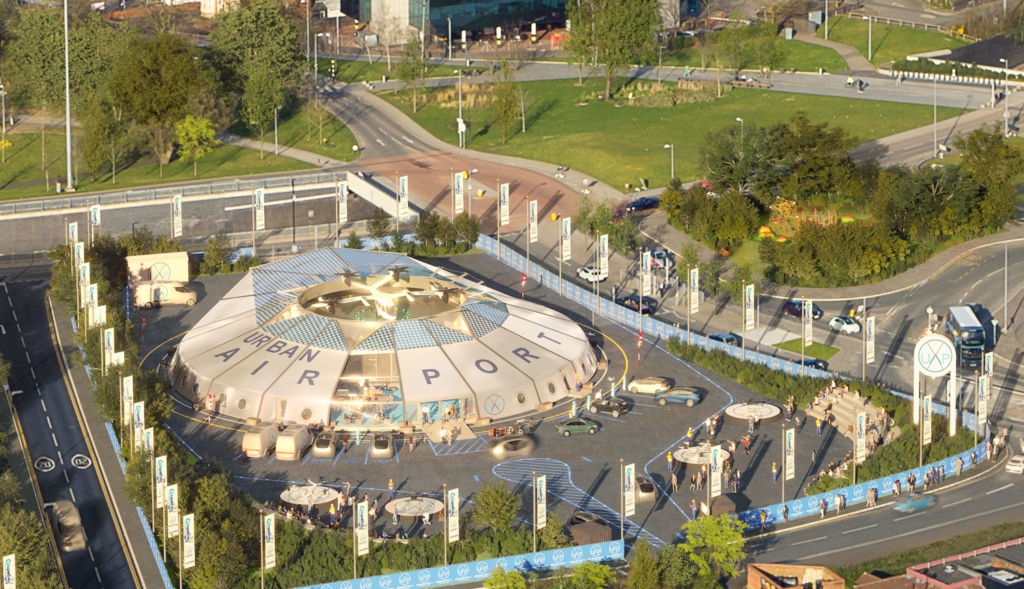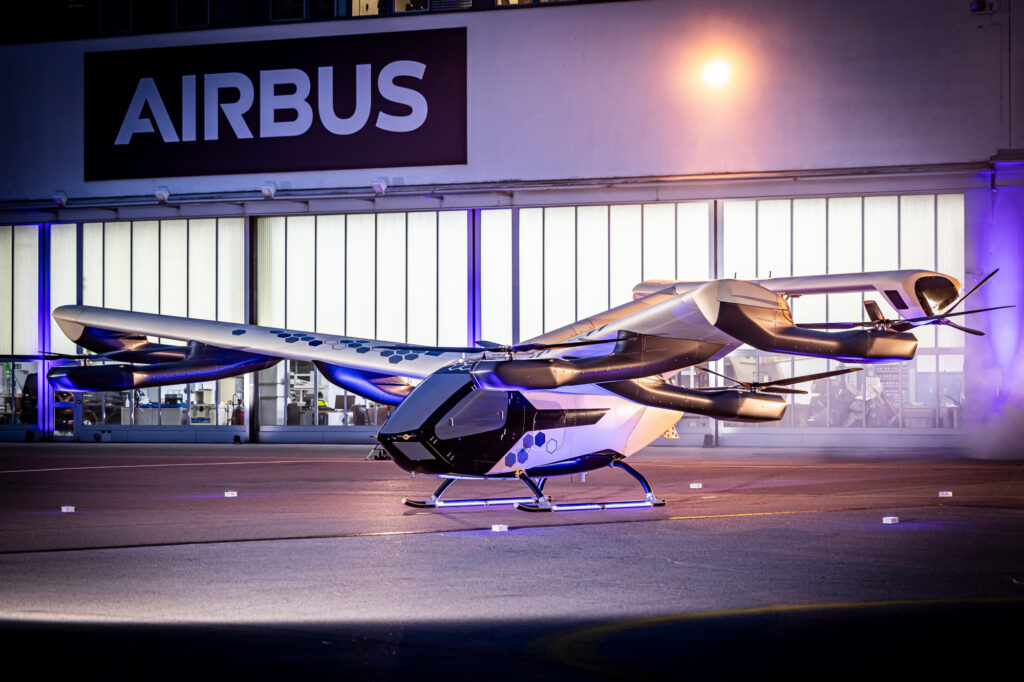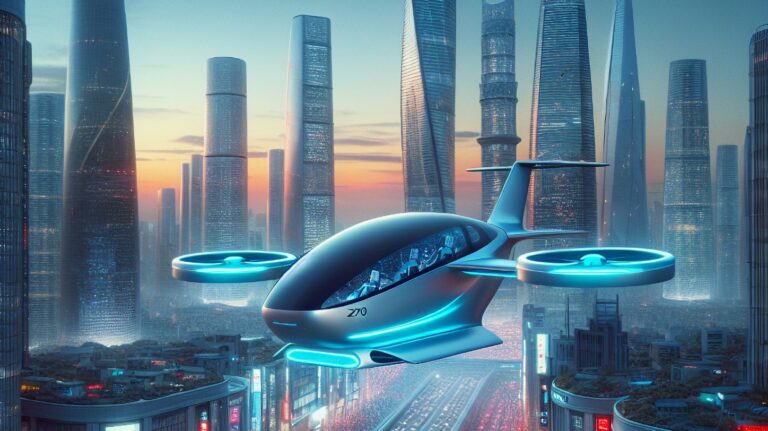With rapid technological advancements, electric vertical take-off and landing aircrafts are transitioning from science fiction to reality. Reuben Henry-Fellows explores the innovations, challenges and regulations shaping the future of flight…
In September 1783, humans achieved a remarkable milestone by taking flight in a hot air balloon. Just a year earlier, this breakthrough was preceded by an extraordinary test flight: a duck, a sheep and a cockerel were sent aloft in the first hot air balloon over the French countryside. This pivotal moment marked a crucial step in aviation history, akin to later milestones such as Félicette, the Parisian street cat sent into space in 1963, and Laika, the Soviet hound who became the first animal to orbit Earth in 1957. While these journeys into the skies and beyond have yet to democratise space travel, the humble flight of the French farmyard trio heralded what would become an £820bn global passenger industry, according to the International Air Transport Association.
Today, technological innovation is once again poised to revolutionise mobility in the air, just as it did during the ‘Golden Age of Flight’ in the 1950s and the ‘Jet Age’ of the 1970s. This new era, known as ‘Advanced Air Mobility (AAM)’, is defined by advances in space exploration, sustainable aviation, enhanced biometric security and the rise of affordable commercial flights.
Among the most transformative developments is the ubiquity of drones. Once confined to military operations, drones have now become so widespread that they require restricted airspace zones in cities. Though often criticised for being noisy, invasive or hazardous in inexperienced hands, drones’ speed and adaptability are fast weaving them into the fabric of modern urban life. Innovations such as noiseless firework displays, rapid commercial cargo delivery and intra-hospital transport of medicines, blood and vaccines are just a few of the applications reshaping society through drone technology.
FAST FACT: 20 potential routes across the UK have been analysed to assess the viability of advanced air mobility. Source: UKRI
Additionally, advances in miniaturisation, smartphone integration, motors, batteries, cameras and open-source software such as ArduPilot and PX4 have ignited a technological arms race in drone innovation. Mirroring Moore’s Law – where the number of transistors in an integrated circuit doubles approximately every two years – companies are rapidly developing larger and more powerful drones capable of both manual and autonomous flight. These advancements have led to the rise of electric vertical take-off and landing (eVTOL) aircraft.
These eVTOLs potentially offer a unique solution to some of today’s urban transportation challenges. By soaring above congested, traffic-clogged streets, they can provide fast, emission-free journeys. Recognising this potential, local governments are beginning to factor eVTOLs into their long-term urban planning. However, before these futuristic aircraft can take to the skies, several challenges must be addressed, particularly those concerning regulations.
Come fly with me
The Bristol Boxkite, Supermarine Spitfire and supersonic Concorde are icons of British aviation, now consigned to museums by more cost-efficient models. While the first two served military purposes, British aviation has largely depended on economy fliers. However, rising inflation, increased competition, higher fuel costs, evolving regulations and labour shortages have all strained this business model, squeezing airlines’ profit margins. Urban air mobility (UAM) offers a potential new growth opportunity for the flight industry.
“There is a definite opportunity to integrate eVTOL flights into public transport systems. But for this to happen, local authorities need integrated transport models that leverage this greener, quieter technology.” – Kirsten Riensema, head of strategic relationships, Civil Aviation Authority
Conventional passenger planes operate at altitudes of 30,000-40,000ft to reduce drag, avoid weather and allow emergency manoeuvres, requiring large airports on city outskirts. Their flight corridors are decades-old and highly regulated, leaving little room for change. In contrast, eVTOL aircraft navigate low-altitude airspace, avoiding these constraints. What’s more, eVTOLs can operate more frequent, smaller passenger flights, potentially at premium prices, making them a compelling option for operators.
Recognising this untapped potential, the UK government has tasked the Civil Aviation Authority (CAA) with developing regulations. “The CAA has set up a separate division called Future Safety and Innovation,” explains Kirsten Riensema, head of strategic relationships at the CAA. This initiative includes workstreams covering aircraft certification, pilot and engineer licensing, vertiport infrastructure, and integration with existing airspace. The challenge thus lies in mixing eVTOLs with other air traffic while addressing conventional aviation and cybersecurity concerns.
However, UAM’s nascent state presents an opportunity to align with Britain’s net-zero targets and zero-emission vehicle mandates. Clean air zones in major cities are phasing out non-compliant vehicles, and eVTOLs can be designed to meet these standards from the outset. “At the European level, Airbus contributes to regulatory frameworks,” says Balkiz Sarihan, head of UAM at Airbus and CEO of Airbus Urban Mobility. “At the international level, Airbus is involved with the International Civil Aviation Organization and the World Economic Forum. For us, it’s very important that the regulatory framework is aligned worldwide.”
Unlike traditional internal combustion engine (ICE) aircraft, eVTOLs rely on fully electric propulsion, avoiding retrofitting challenges while aligning with net-zero regulations. “CityAirbus benefits from a fully electric propulsion that reduces CO2 and NOx emissions,” Sarihan explains. Airbus also works to ensure responsibly sourced energy and sustainable product lifecycles.
Vertical Aerospace, a UK-based UAM manufacturer, has launched ‘Flightpath 2030,’ a strategy to lead electric aviation. By gradually refining its eVTOL prototypes and engaging positively with the CAA, the company aims to produce 200 VX4 eVTOL units annually by 2030, potentially scaling to 700 units per year if regulations support this growth. This ambitious vision could herald a new chapter for British aviation, blending sustainability with innovation.
Place to perch
Unlike electric vehicle manufacturers, eVTOL developers lack the benefit of decades of specialised infrastructure, laws and regulations to support their growth. While aerial transport eliminates many physical obstacles, eVTOLs still face the challenge of adhering to a myriad of emerging guidelines. “We’re trying to have a pro-innovation culture but without forgetting that the CAA’s overall mission is to protect people,” explains Riensema.
For urban environments, this means addressing concerns about noise, air pollution and flight safety before widespread deployment. The Air Navigation (Amendment) Order 2018 introduced NOx emission limits for aviation engines, enforced by the CAA through performance certifications. Although eVTOLs and eco-friendly aviation fuels have mitigated NOx issues, noise pollution remains a key challenge.
“We have recently published a report on the effects of aviation noise from emerging technologies on humans,” says Riensema. The CAA is developing noise criteria for eVTOLs, with final decisions on acceptability left to local governments. Helicopters, for comparison, produce 85–95 dB(A) during take-off and landing, while eVTOL manufacturers aim for thresholds around 70 dB(A). “We aim to be noise-neutral,” notes Sarihan. Advanced designs, such as the CityAirbus NextGen with its eight-propeller propulsion system, aim to further reduce noise, particularly during forward flight.
FAST FACT: China plans to deploy 100,000 flying cars in cities within six years. Source: China Low Altitude Economic Alliance
Meanwhile, innovations such as placing landing zones outside urban areas could further mitigate noise concerns, but this might limit UAM’s convenience. As a result, manufacturers are exploring solutions such as modular vertiports – compact, multi-modal transport hubs that support eVTOL operations. Coventry’s 2022 vertiport prototype, developed with Urban Air-Port, demonstrates how such infrastructure can facilitate urban connectivity, cargo logistics and passenger services while supporting sustainability. Urban Air-Port aims to establish 200 operational vertiports worldwide by 2030, using Coventry’s model as a blueprint.
“Flight corridor implementation is a critical focus,” Sarihan explains. “We’re working with organisations such as Munich International Airport and German Air Traffic Control to simulate eVTOL traffic integration at airports.” Such initiatives highlight the vital importance of collaboration between manufacturers, governments and transport stakeholders.

In the UK, the Future Flight Challenge launched the UK Air Mobility Consortium in 2019, bringing together Vertical Aerospace, Rolls-Royce, Virgin Atlantic and other major players. This partnership aims to integrate UAM with existing infrastructure, creating a cohesive ecosystem through harmonised protocols, software upgrades, and operational requirements. Data from joint simulations will further this mission.
“Adoption depends on how quickly eVTOLs are certified and manufactured,” says Riensema. “We also need to address battery supply and ensure adequate charging infrastructure – issues that have hindered EV adoption. We must move swiftly to prevent delays that could stall industry progress.”
Future flight
As single- and double-passenger eVTOLs are rapidly developed and existing designs are refined, their adoption in urban environments is expected to grow. With limited competition, worsening road congestion and significant private investment driving innovation, the fledgling urban air mobility (UAM) market appears poised for expansion. However, whether UAM becomes an exclusive convenience for the wealthy or evolves into a system of sky-bound motorways accessible to all will depend on how seamlessly it can be implemented.
“There is a definite opportunity to integrate eVTOL flights into public transport systems,” says Riensema. “But for this to happen, local authorities need integrated transport models that leverage this greener, quieter technology or replace more polluting traffic.”
The UK’s Jet Zero strategy, introduced under former UK prime minister Boris Johnson’s Conservative government, aims to decarbonise aviation by 2050. However, the current Labour administration has yet to endorse the initiative or any specific UAM-related policies beyond the zero-emission vehicle mandate.

This potential for transformative change echoes the early days of flight. A year after their historic hot air balloon flight, the trio of animals from the Montgolfier brothers’ experiment ascended again, this time in the presence of King Louis XVI. Although a fabric tear forced a descent into the Wood of Vaucresson, the animals survived and were celebrated as ‘heroes of the air’. UAM could offer public transportation a similar leap forward.
“The CAA calls it a ‘crawl, walk, run’ approach,” Riensema adds. “Initially, we establish rules, regulations and oversight. As operations scale up and more data becomes available, regulations will evolve to address emerging risks. The current vision is for eVTOLs to supplement or eventually replace some road traffic, creating a new era in urban transportation.”
This article was originally published in the December 2024 issue of CiTTi Magazine.
Subscribe for free to the quarterly print edition of CiTTi Magazine for exclusive insights into the key business issues shaping the future of sustainable urban mobility. Stay ahead of the curve by signing up for the free CiTTi weekly newsletter, delivering sector-leading content straight to your inbox every Friday. For even more updates, follow CiTTi Magazine on X (formerly Twitter) and LinkedIn. LinkedIn followers can also subscribe to Urban Digest — a weekly newsletter curated exclusively for the CiTTi Magazine LinkedIn community.


